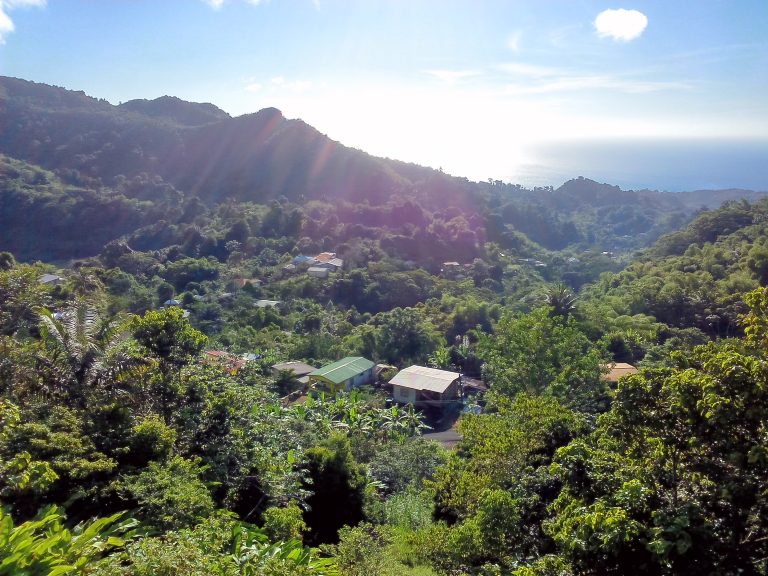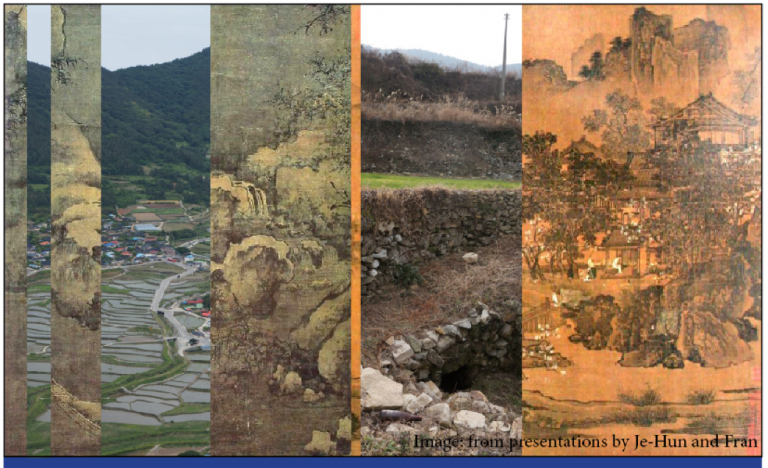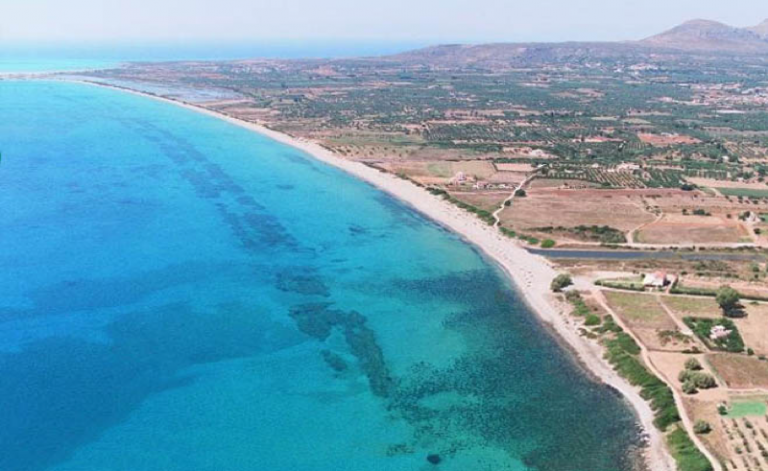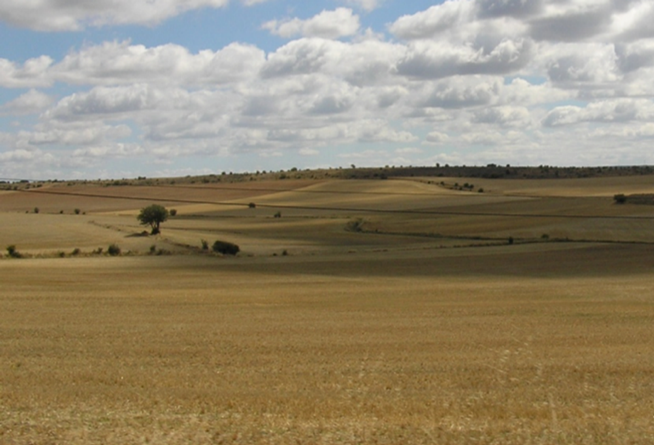To provide observations and information on the emerging fields of landscape scale conservation, heritage preservation, and sustainable community development.
Newsletter
Stay up-to-date with the latest nature, culture and community news.
We won’t spam you or share your information. Newsletters are sent approximately 10 times a year. Unsubscribe at any time.

Exploring the Landscapes of the Caribbean
Palm trees, turquoise water and beaches are the idyllic images of the Caribbean promoted in TV. A wilder Caribbean landscape of nature reserves is familiar to eco-tourists Yet the perceptions of many of the region’s residents do not mesh easily with either of these landscapes. The challenge has been how to identify the significance of a larger sense of place for the local community, for the people who live there, not the images constructed for tourists. Read about some innovative ideas.

Naturecultures Dialogues: The theory of naturecultures integration
Je-Hun Ryu and Fran Han point at the problem of using the concept behind World Heritage “cultural landscape” in Korea and China respectively, because it follows a modern Western-European idea of nature, as separate from culture. They both explain the historical background in their own contexts of an undivided nature-culture paradigm, and where humans are understood as part of the natural world

Rural Renaissance and Endurance: Painting a picture of hope in the Heartland
Examples of rural renewal and continuity are a reason for hope in the center of our country. This inspirational presentation was given by a young farmer who with her husband manage an organic farm in Decorah Iowa, which they describe “as growing organic crops, grazing sheep and cattle on pasture, powering their farm and home with the sun, and growing deep roots in our community.”

Vatika Bay Maritime Landscape
The Vatika Bay Maritime Landscape at the southern end of the Peloponnese peninsula in Greece exemplifies the interconnection between cultural and natural resources and different approaches to their conservation. As a marine ecosystem, the bay supports numerous endangered and exotic plant and animal species. As the crossroad of both ancient and modern of Mediterranean navigation, it has many underwater archeological remains. This article highlights the differing preservation strategies and outcomes for these interrelated resources.

World Rural Landscapes: A Worldwide Initiative for Global Conservation and Management
What are the best ways to identify and conserve rural landscapes? Since 2012, participants at a series of international meetings have sought to answer this

Exploring the Landscapes of the Caribbean
Palm trees, turquoise water and beaches are the idyllic images of the Caribbean promoted in TV. A wilder Caribbean landscape of nature reserves is familiar to eco-tourists Yet the perceptions of many of the region’s residents do not mesh easily with either of these landscapes. The challenge has been how to identify the significance of a larger sense of place for the local community, for the people who live there, not the images constructed for tourists. Read about some innovative ideas.

Naturecultures Dialogues: The theory of naturecultures integration
Je-Hun Ryu and Fran Han point at the problem of using the concept behind World Heritage “cultural landscape” in Korea and China respectively, because it follows a modern Western-European idea of nature, as separate from culture. They both explain the historical background in their own contexts of an undivided nature-culture paradigm, and where humans are understood as part of the natural world

Rural Renaissance and Endurance: Painting a picture of hope in the Heartland
Examples of rural renewal and continuity are a reason for hope in the center of our country. This inspirational presentation was given by a young farmer who with her husband manage an organic farm in Decorah Iowa, which they describe “as growing organic crops, grazing sheep and cattle on pasture, powering their farm and home with the sun, and growing deep roots in our community.”

Vatika Bay Maritime Landscape
The Vatika Bay Maritime Landscape at the southern end of the Peloponnese peninsula in Greece exemplifies the interconnection between cultural and natural resources and different approaches to their conservation. As a marine ecosystem, the bay supports numerous endangered and exotic plant and animal species. As the crossroad of both ancient and modern of Mediterranean navigation, it has many underwater archeological remains. This article highlights the differing preservation strategies and outcomes for these interrelated resources.

World Rural Landscapes: A Worldwide Initiative for Global Conservation and Management
What are the best ways to identify and conserve rural landscapes? Since 2012, participants at a series of international meetings have sought to answer this


